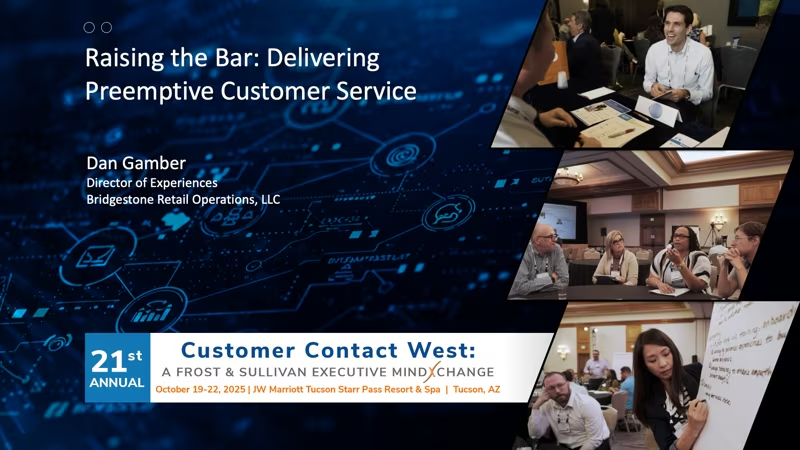Over the past years, I have worked with many clients around the globe implementing powerful voice of the customer (VoC) programs. One of the most common themes I see is management’s impatience in asking for results and the customer experience teams’ frustration about not achieving their (unrealistic) objectives.
At the same time, listening to your customers is one of the most rewarding activities an organization can engage in. Just like you don’t start playing football and aim at playing in the Champions League in your first year, you don’t launch a voice of the customer program expecting comprehensive and all-encompassing insight immediately.
Implementing a voice of the customer program follows several phases based on an organization’s readiness. Let’s look at what those phases are.
Exploration
In the beginning, your voice of the customer measurement efforts will be very manual and not yet integrated with key organizational structures and decision-making processes. The Exploration method developed by my organization consists of a straightforward personal interview with about 20 to 30 employees or customers. The results are graphically aggregated in an intuitive way and help to easily identify room for improvement, create support for the voice of the customer program, and get going at a very affordable cost. The Exploration method identifies the most pressing pain points customers face and is typically performed in a few regions or business units in the beginning.
Based on the findings of the Exploration, the regional or business unit management team can derive pragmatic actions and immediately improve internal processes and the resulting customer experience.
Expansion
Now that one or more explorations have given you your first success stories, it is time to expand into more regions and business units. Now is also the moment to run one or more customer journey mapping workshops in order to draw and evaluate the typical customer journeys in your organization. Customer journey maps also help you identify the so-called moments of truth, the most important phases of the customer journey and, hence, the most critical touch points you want to include in your voice of the customer program.
In your expansion phase, you will now include some of those critical touch points in your measurement of customer satisfaction and expand your methods from interviews to KPI measurement and surveys.
Automation
With more and more relevant data coming in from more and more regions and business units, it is now time to create a home for all of this data. Implementing a customer experience platform solution as well as the associated customer database and survey tools will allow you to automate a significant part of your customer listening program.
In addition to that, these tools will allow you to automatically analyze and dashboard the results. In this phase, you will also standardize some of the potentially numerous surveys that already happen across your organization and try to run them all on your newly introduced platform.
All of this relevant data and actionable insight would be worthless, however, if you failed to establish a powerful governance process within your organization. This process involves all management levels and ensures that data is turned into insights, which in turn is then turned into prioritized action plans that will improve internal processes and the resulting customer experience.
Correlation
With the wealth of observed key performance indicators and feedback on customer satisfaction, you are now in a position to run multivariate correlation analyses that help you understand the impact of productivity KPI’s and customer satisfaction on the company’s bottom line.
Here is where the fun really starts! This is where management will typically want to start your voice of the customer program! However, be aware that it needs a level of maturity and data availability to get here. The rewards are plentiful, though. With your newly won correlation knowledge, you are now able to efficiently prioritize action plans and create the biggest impact on customer satisfaction, customer loyalty, and the resulting bottom-line results with limited resources.
Adaptation
In this ultimate phase of your customer listening program, the organization achieves a state of permanent, sustainable, focused, and data-driven adaptation of processes and services to customer needs.
Your system of observed key performance indicators across the organization as well as a constant stream of customer feedback now allows you to perform a constant optimization of all business processes, offerings, and resulting experiences. This will lead to the optimal alignment between your organization and customers’ needs.
As you can see, implementing a voice of the customer program is a journey. Just like climbing a mountain, you start at the base of the mountain and skillfully make your way up. On your way, you will acquire new capabilities and add new tools to your portfolio. All of this, ultimately put you on to the peak of customer centricity.
Stefan has been a leader in Fortune 500 companies for more than 15 years. He has held global responsibility for the customer experience of tens of millions of customers as well as the employee experience of thousands of employees. Stefan helps leading organizations around the globe to combine their Customer and Employee Experience practices and treat them as two sides of the same coin.
Stefan bases his insights on a success story of having increased a Fortune 500 company’s NPS score by 30 points, making them a leading CX player in their field. His latest book—The End of Work‐Life Balance—is available around the world.



